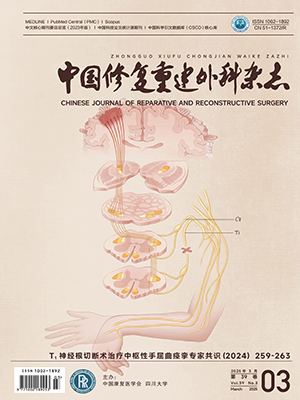OBJECTIVE To understand the influence of selective ventral rhizotomy on the function of lower extremity and to investigate its effect in the treatment of spastic cerebral palsy. METHODS Ten domestic dogs were used in this study. Under anesthesia, the lumbar spinal canal was reached through posterior approach. The ventral rami consisted of left L5, L6 and L7 spinal nerves was separated. The electromyographic changes of each branch of the rami was examined by electrical stimulation. 60 percents of the L6 ventral nerve root which was the major innervation of the gastrocnemius muscle in dogs, and 30 percents of the other two rami were culted off. The muscle tone, the coordinated movement and balanced capacity of the dogs were observed. After one month, the electrophysiological changes of the biceps femoris, semitendinous, gastrocnemius and anterior tibial muscles were examined and compared with that of the identical muscles of the contralateral limbs. RESULTS Selective ventral rhizotomy was well correspondent to the innervated muscles. After operation, the coordinated movement and balanced capacity were good, but the muscle tone of the corresponding muscle was lowered. This technique was applied on 3 patients with satisfactory short-term results. CONCLUSION For the treatment of spastic cerebral palsy, it is worth trying the selective ventral rhizotomy.
Citation: CHEN Shao jun,XU Qing zhong,XU Kai he,et al.. SELECTIVE VENTRAL RHIZOTOMY FOR THE TREATMENT OF SPASTIC CEREBRAL PALSY. Chinese Journal of Reparative and Reconstructive Surgery, 1999, 13(2): 79-82. doi: Copy
Copyright © the editorial department of Chinese Journal of Reparative and Reconstructive Surgery of West China Medical Publisher. All rights reserved




